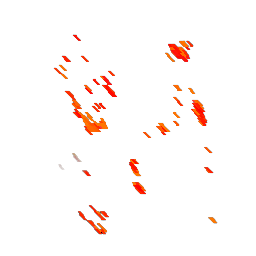Page Summary
-
The dataset provides near real-time active fire detection using NOAA-20 VIIRS 375m nominal resolution data.
-
The data offers improved detection of small fires and better mapping of large fire perimeters compared to coarser resolution products.
-
The dataset is available from 2023-10-08 to 2025-10-16 and is updated daily.
-
The data is considered near-real-time and is not of science quality.
-
Key bands include brightness temperatures, confidence levels, and fire radiative power.

- Dataset Availability
- 2023-10-08T00:00:00Z–2026-01-15T00:00:00Z
- Dataset Provider
- NASA / LANCE / NOAA20_VIIRS
- Cadence
- 1 Day
- Tags
Description
NOAA-20 (JPSS-1) Visible Infrared Imaging Radiometer Suite (VIIRS) Active Fire detection product is based on the instrument's 375m nominal resolution data. Compared to other coarser resolution (≥ 1km) satellite fire detection products, the improved 375 m data provide greater response over fires of relatively small areas, as well as improved mapping of large fire perimeters. Consequently, the data are well suited for use in support of fire management (e.g., near real-time alert systems), as well as other science applications requiring improved fire mapping fidelity.
The data in the near-real-time dataset are not considered to be of science quality.
Additional information can be found here.
Bands
Pixel Size
375 meters
Bands
| Name | Units | Min | Max | Pixel Size | Description |
|---|---|---|---|---|---|
Bright_ti4 |
K | 250* | 400* | meters | VIIRS I-4 channel brightness temperature of the fire pixel. |
Bright_ti5 |
K | 250* | 400* | meters | VIIRS I-5 Channel brightness temperature of the fire pixel. |
confidence |
0 | 2 | meters | A detection confidence intended to help users gauge the quality of individual active fire pixels. The confidence estimate ranges between 'low': 0, 'nominal': 1 and 'high': 2 for all fire pixels within the fire mask. Low confidence daytime fire pixels are typically associated with areas of Sun glint and lower relative temperature anomaly (<15 K) in the mid-infrared channel I4. Nominal confidence pixels are those free of potential Sun glint contamination during the day and marked by strong (>15 K) temperature anomaly in either day or nighttime data. High confidence fire pixels are associated with day or nighttime saturated pixels. Please note: Low confidence nighttime pixels occur only over the geographic area extending from 11° E to 110° W and 7° N to 55° S. This area describes the region of influence of the South Atlantic Magnetic Anomaly which can cause spurious brightness temperatures in the mid-infrared channel I4 leading to potential false positive alarms. These have been removed from the NRT data distributed by FIRMS. |
|
line_number |
1* | 110000* | meters | Line number in the FIRMS CSV file that the pixel came from. |
|
frp |
MW | meters | FRP depicts the pixel-integrated fire radiative power in megawatts (MW). Given the unique spatial and spectral resolution of the data, the VIIRS 375m fire detection algorithm was customized and tuned to optimize its response over small fires while balancing the occurrence of false alarms . Frequent saturation of the mid-infrared I4 channel (3.55-3.93 μm) driving the detection of active fires requires additional tests and procedures to avoid pixel classification errors. As a result, sub-pixel fire characterization (e.g., fire radiative power [FRP] retrieval) is only viable across small and/or low-intensity fires. Systematic FRP retrievals are based on a hybrid approach combining 375 and 750m data. |
||
acq_epoch |
seconds | meters | Acquisation timestamp in seconds |
||
acq_time |
seconds | meters | The time of day in seconds since midnight |
||
DayNight |
meters | 1= Daytime fire, 0= Nighttime fire |
Terms of Use
Terms of Use
NASA promotes the full and open sharing of all data with the research and applications communities, private industry, academia, and the general public. Read the NASA Data and Information Policy.
If you provide the Land, Atmosphere Near real-time Capability for EOS (LANCE) / Fire Information for Resource Management System (FIRMS) data to a third party, follow the guidelines in the LANCE Citation, Acknowledgements, and Disclaimer site and replicate or provide a link to the disclaimer.
Citations
NRT VIIRS 375 m Active Fire product VJ114IMGTDL_NRT distributed from NASA FIRMS. Available on-line https://earthdata.nasa.gov/firms. doi:10.5067/FIRMS/VIIRS/VJ114IMGT_NRT.002
Explore with Earth Engine
Code Editor (JavaScript)
var noaa_viirs = ee.ImageCollection('NASA/LANCE/NOAA20_VIIRS/C2') .filter(ee.Filter.date('2023-10-08', '2023-10-30')) var band_vis = { min: [ 280.0, ], max: [ 400.0, ], palette: ['yellow', 'orange', 'red', 'white', 'darkred'], bands: [ 'Bright_ti4', ], } Map.setCenter(-113.2487, 59.3943, 8); Map.addLayer(noaa_viirs, band_vis, 'NOAA nrt firms')